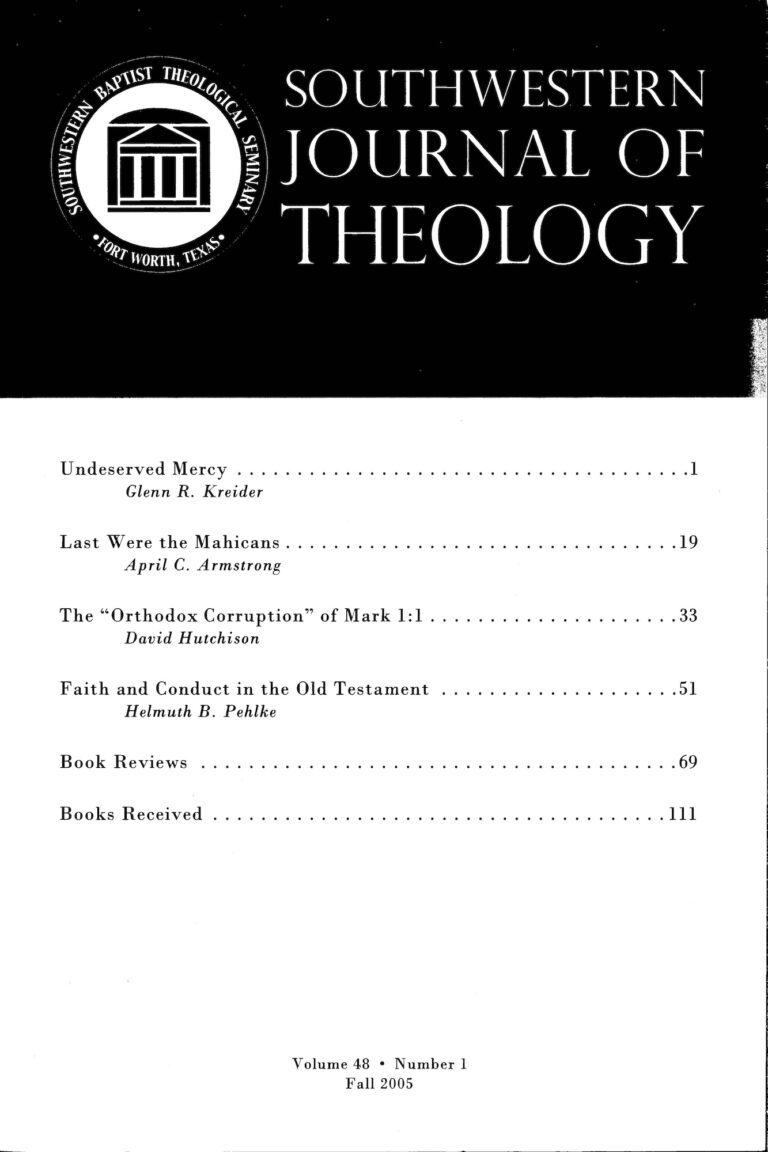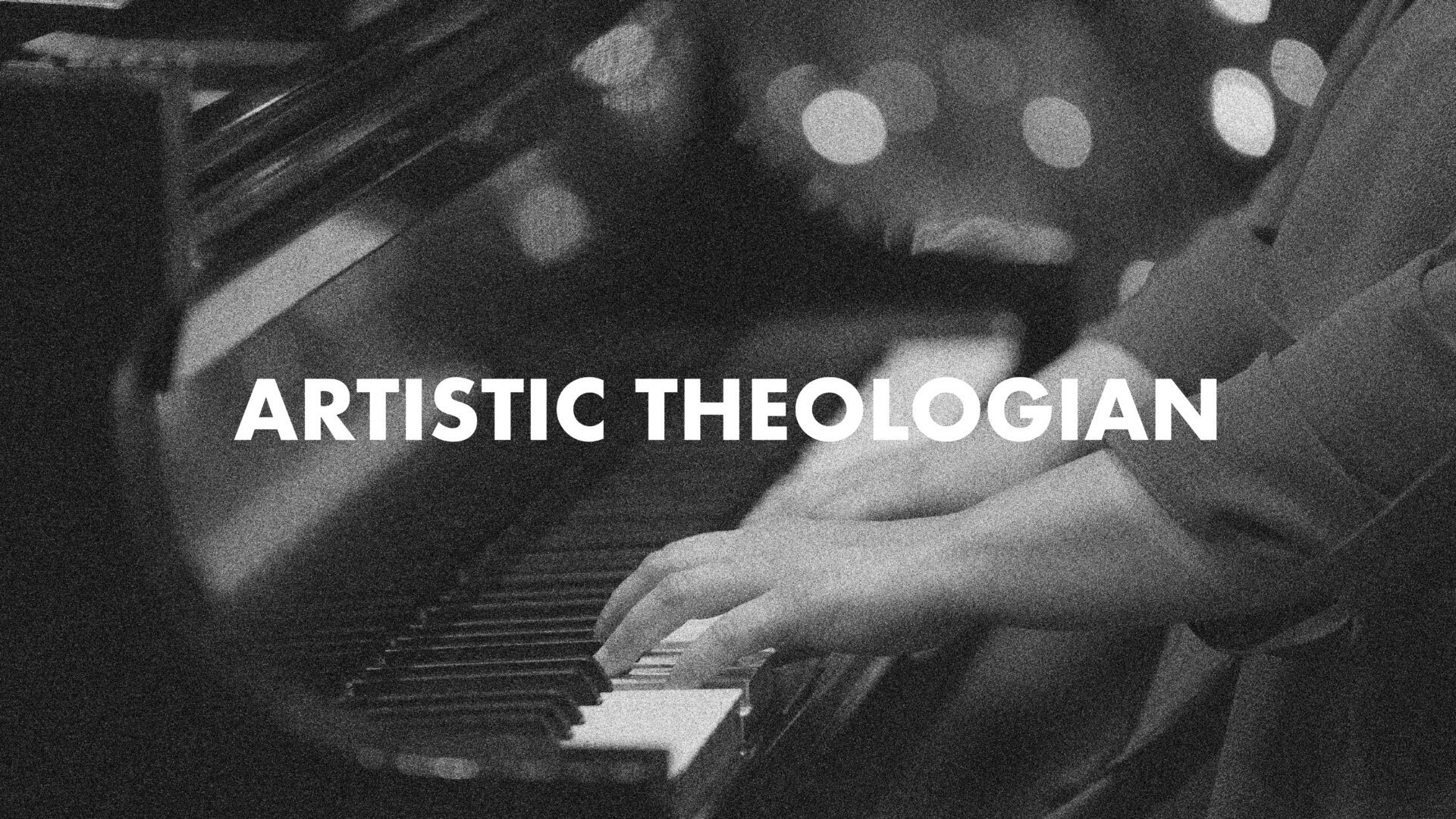
Southwestern Journal of Theology (48.1)
Southwestern Journal of Theology
Volume 48, No. 1 - Fall 2005
Editor: Paige Patterson
2 volumes. By Charles Kannengiesser. Leiden: Brill, 2004. Vol. 1: xxxiv + 1-669. Vol. 2: xii + 670-1496. Hardcover, $339.00.
Charles Kannengiesser, Professor in the Department of Theological Studies at Concordia University in Montreal, Canada, and renown scholar of early Christian thought, has in his senior years bequeathed to the growing numbers gravitating to patristics a monumental work as creative in conception as it is timely for a large niche of current interest. The author’s chosen term “handbook” suggests some modesty. In fact, Johannes Quasten’s four volume Patrology (1950-1977) is the comparison that comes to mind, though the present work is not an updating of that more comprehensive and general reference work. The Handbook spanned a decade in preparation. Its purpose is to provide “easy access” to patristic treatment of scripture, the central documents of the early Christian church (11-12).
Kannengiesser’s creative conception merits brief comments for navigation by the prospective buyer, or more likely borrower, of these volumes. Following the usual introductory materials, the layout is in two unequal parts, “General Considerations” in four chapters of history of scholarship and Jewish and Greco-Roman background (23-373) and “Historical Survey” with ten chapters of Christian writers and writings extending to the eighth century (375-1473). Interspersed through the chapters are sixteen “Special Contributions,” constituting a third of the entire work, by other scholars. The ingenuity in the architecture of the work is indicated by entries on surprising topics, “Rabbinic Literature,” and complementary ones, “Patristic Exegesis of the Books of the Bible.” The latter is of particular interest. It serves as a chapter in itself, Chapter IV, and was co-authored by two distinguished patristics scholars, Catholic professor, Cistercian Father David L. Balas, and Baptist professor, D. Jeffrey Bingham.
Kannengiesser quietly shows keen insight into current needs and interests in choosing the niche of patristic exegesis. His career has spanned a period in which attention to patristics has increased significantly. Since the Second World War popularity has grown in several directions and for several reasons. While our author has had his finger on the pulse of these developments, he has specialized in patristic hermeneutics and use of scripture. Many university settings have witnessed enriched research in interdisciplinary social-scientific and literary-critical areas while Roman Catholics, Greek Orthodox, and Protestants have continued interest in the theological areas in part due to the research of major scholars like Kannengiesser. The present work constitutes a major boost for this set of interests, whether for introduction to or for research in them. In particular, some interpreters of scripture have become in recent decades less wedded to a grammatical-historical approach built on the historical-critical method, concepts arising from rigid antitheses imagined between Alexandrian and Antio-chian schools of interpretation, and have expanded their horizons to ancient rhetoric and theological exegesis integrated with spirituality from the Fathers.
In every creative endeavor one finds limitations. As might be expected in such a reference piece, bibliography is interspersed at the end of sections with a general bibliography concluding each chapter. It is becoming dated, extending only to 1995. There is no index of ancient and modern names, though the work concludes with an “index of names for the Introduction and Part A,” a half page of major names discussed by Kannengiesser in the Introduction and Chapters 1-3. As substitute for a fuller index of primary sources, the author includes an “alphabetical list of principal authors & anonymous works discussed” in Volume 1 (xi-xiv). Attending the benefit of a variety of special contributors are the inevitable shifts in style.
Professor Kannengiesser and his contributors merit our warmest appreciation for their work. The Handbook will prove to be not only the consummate elucidation of the state of research on patristic use of scripture at the end of the twentieth century but as well the indispensable starting point for all subsequent research in the area for the twenty-first century.
The work is appropriately commended to “the ordinary reader,” by which the author means specialist and non-specialist (11). A daunting list price notwithstanding, Amazon at the time of writing this review is offering the book for half of the list price, an attractive offer for ready access to what will be the standard reference work on Christianity’s foundational approaches to interpreting its scripture. Every student of the Bible will benefit from dipping into this handbook and can do so easily. Indeed he or she should avail himself or herself of such an avenue back to these roots in the faith.





